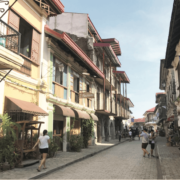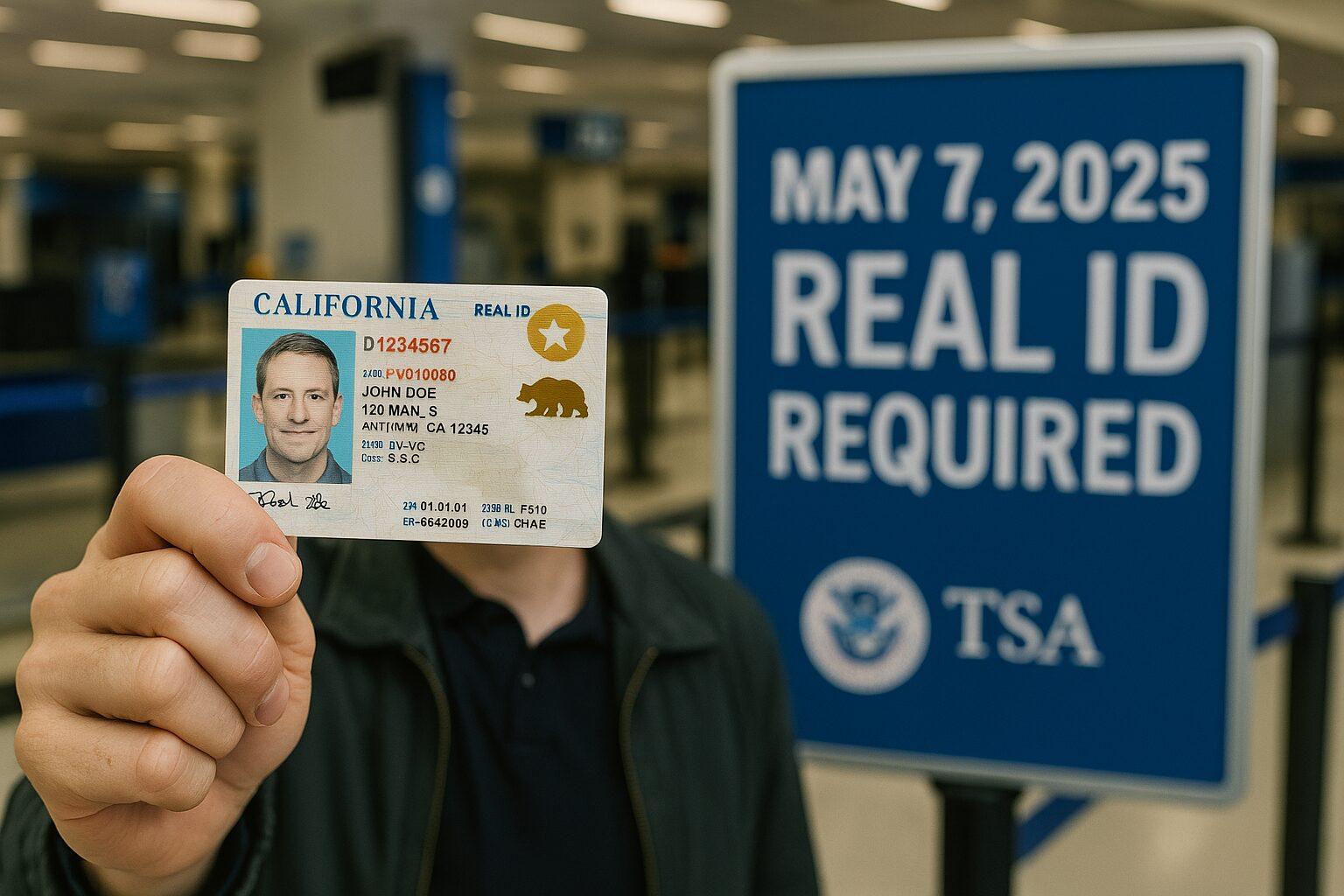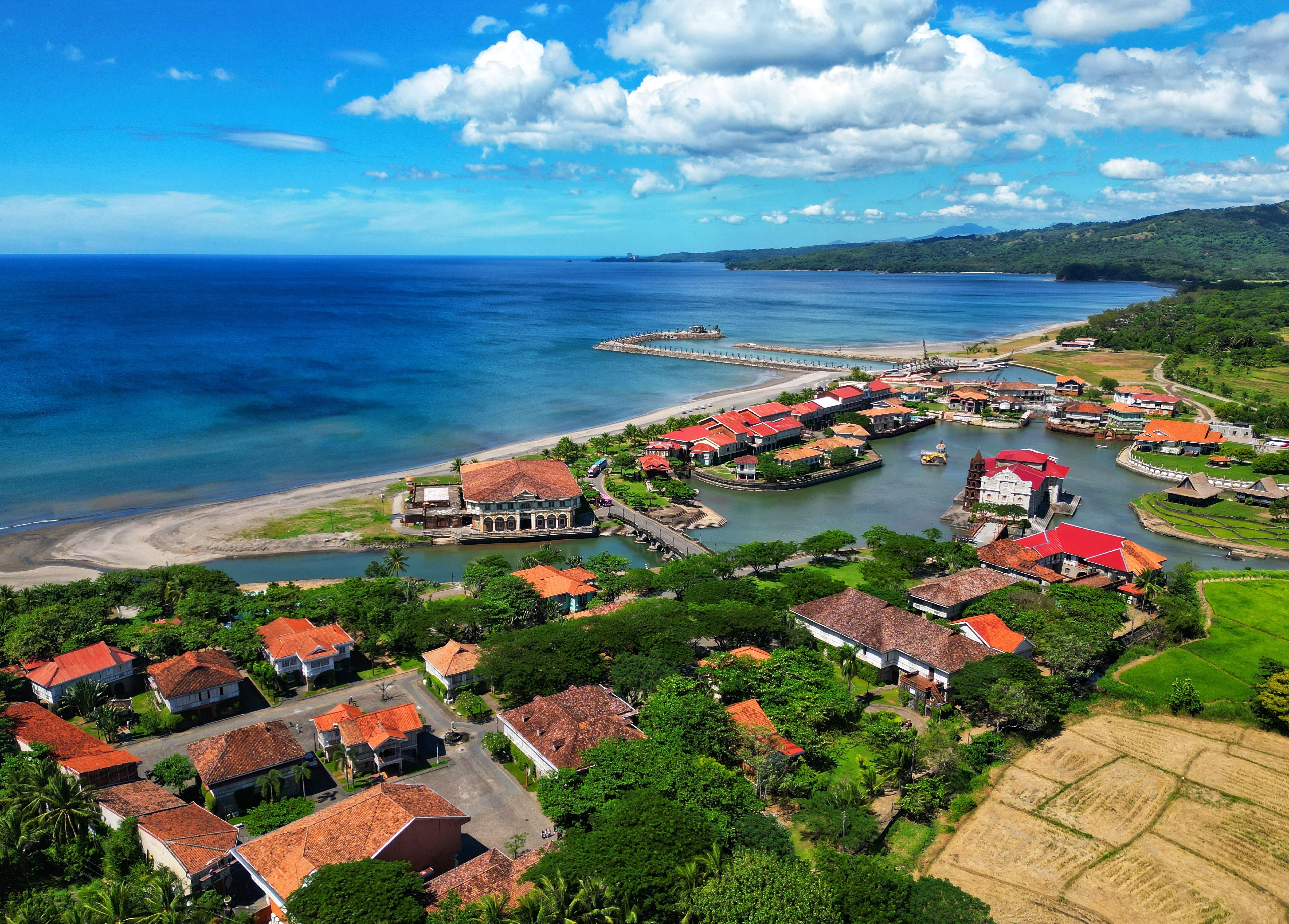As a second-generation Filipina-American, I leap at every opportunity to travel to the Philippines, especially when the trip is centered on a place that is outside of Manila or the popular island destinations.
Earlier this fall, I was invited to join a seven-day familiarization tour to Vigan, Ilocos Sur and Kuala Lumpur, Malaysia with about 20 high-performing travel agents from Southern California and representatives from Philippine Airlines and the Philippine Department of Tourism (DOT).
Day 1
We arrived at Ninoy Aquino International Airport (NAIA) early Sunday morning via the Friday night red-eyeight out of Los Angeles on Philippine Airlines (PAL), which I tend to prefer as my airline of choice to the Philippines as the voyage is generally smooth and comfortable enough for me to wake up at my destination well-rested. We met a similar group of travel agents from San Francisco who would be part of our Vigan tour. Since our sight to Laoag was not until 11 a.m., we were transferred to the nearby Belmont Hotel to rest, freshen up and indulge in the buffet breakfast — a precursor to all the food we would be eating for the rest of the week. Nothing says ‘welcome to the Philippines’ quite like eating generously for every meal.
It was a brief flight to Laoag, where we were met by local DOT representatives and our tour guide for the next few days, who shared facts like Ilocos Norte being the rest International Organization for Standardization (ISO)-certified province in the country. Of course, our next stop was to eat again. We were taken to La Preciosa, a local restaurant with a homey ambiance serving Ilocano dishes, like bagnet and pinakbet. They are surprisingly known for their carrot cake, which is sprinkled with fresh car- rot shavings.
From there, we began our city tour under the blistering sun. Though past the summer season in the country, I was amazed by how hot and humid it still was. Some of our stops included the Sinking Bell Tower, Ilocos Norte Capitol building, Aurora Park and its large LAOAG sign perfect for photos, and the Marcos Hall of Justice. I was struck by the 45-meter Sinking Bell Tower of St. William’s Church, a remnant
of the Spanish rule, because it is now reportedly sinking at a rate of an inch each year. As the surroundings have become more modern (a Puregold and gas station were constructed nearby), the tower still remains untouched. Sadly, visitors are no longer allowed to enter because of its deteriorating state.
Our last site of the day was Paoay Church (Saint Augustine Church), which was completed in 1710 and declared a United Nations Educational, Scientific and Cultural Organization (UNESCO) World Heritage Site in 1993. It is known for its 24 huge buttresses at the sides and back of the church structure and three-story coral bell tower to the left.
We boarded our (thankfully) air-conditioned tour bus for a nearly two-hour ride to Vigan, the capital of the Ilocos Sur province. Considered a UNESCO World Heritage Site and a New7Wonders City, I was ready to explore the city with heritage houses and cobblestone streets. We were checked into Hotel Luna, a four-star property in the heart of Heritage Village and just a block away from the famed Calle Crisologo. The hotel itself is an attraction with its art collection (the second floor has a museum of Philippine art) and Spanish colonial architecture.
After dinner, I explored Calle Crisologo and was transported back in time, as only kalesas (horse-drawn carriages) are allowed. By night, golden lamps light the streets as locals and visitors alike walk around or sit on tables on the sidewalks for a leisurely dinner. Along the way, vendors draw you into their
shops to buy Vigan-made products, such as antiques, wood- crafts, vinegar or basi wine. Some stores even sell uncooked bagnet and longganisa or serve hot empanadas. What I particularly enjoyed about the street was how it was not crowded with pedestrians or vendors compared to other famous streets around the world I’ve visited in the past.
Day 2
The second day began with a breakfast buffet at the restaurant inside of Hotel Luna. With a long itinerary ahead of us, my group and I indulged in multiple plates of the offerings, like Vigan longganisa, tocino, tapa, eggs with ampalaya (bitter melon), champorado (sweet chocolate rice porridge), and dragon fruit.
Our first stop was Bantay Church in Bantay, Ilocos Sur. Rebuilt after World War II, the structure has a Neo-Gothic de- sign, drawing from Spanish architecture. In the distance, the Bell Tower sits on a hilltop and was used as a watchtower during the war. We then proceeded to the Baluarte of Chavit Singson, a wildlife sanctuary and facility where you can and animals like lions, ostriches, miniature horses and an array of reptiles. It’s most likely best enjoyed by families with younger children and if you have more time to participate in the activities and interactive shows.
The rest of the afternoon included lunch at Hidden Garden (a sight for those with a green thumb), watching a clay jar making demonstration (patience and strength are required!), and tours of the Crisologo museum and Syquia Mansion.
The Syquia Mansion was owned by the Dona Alicia Quirino, the wife of former President Elpidio Quirino. The former pres- ident, who was born in Vigan, would hold some of his functions at this mansion. I delighted in the ornate interiors and furniture — from Venetian Murano mirrors to capiz windows to a bright pink dining room. For architecture and history buffs, this museum is a must-see and worth at least an hour stay.
Before heading to Paoay, we stopped at Fiesta Garden Hotel for a site inspection and merien- da (afternoon snack) that consist- ed of Vigan empanadas and miki noodles (a chicken noodle soup with boiled egg and chicharon). The day was topped off with a dinner at Vista Del Lago hosted by the provincial government — represented by Ilocos Norte senior board member Matthew Manotoc, son of Gov. Imee Marcos, who was present at the meal — and the tourism of ce.
Though our stay in the Ilocos region would be brief, the tour- ism presentation had us all itch- ing for a next visit as there are several more beautiful spots (i.e. Paoay Sand Dunes, Bangui Wind Farm, and Pagudpud) to explore.
Day 3
Before we returned to Laoag, I enjoyed an early morning walk down Calle Crisologo to actually see the houses in daylight. This time is optimal for picture taking as there are not that many people on the streets yet.
We managed to squeeze in a private tour of Malacañang of the North in Paoay, Ilocos Norte, which was the residence of for- mer President Ferdinand Marcos and his family. The structure it- self overlooks Paoay Lake, which supposedly had a special meaning to Marcos, and still has original furniture and some clothes of the former president and first lady. (If you ever go inside, take a look at how the staircase was built!)
Our nal meal in the province was at Herencia Cafe across from Paoay Church. To me, it was the standout dining expe- rience during the trip because of the ingenious pinakbet pizza creation I was introduced to. We also noshed on crispy dinuguan, dinengdeng (a “bagoong” based soup made primarily of vegetables which happens to be one of my favorite Filipino dishes), and yes, more bagnet.
That afternoon, we were back in the bustling metropolis of Manila, holed up at the Hyatt City of Dreams. On the fourth day, the Los Angeles group made its way to Kuala Lumpur, while the San Francisco agents went to Bangkok — both part of the DOT’s “twin destinations” push to visit another Asian country after the Philippines.
As I reflect on this brief, but comprehensive trip, the more I realize that the Philippines has a multitude of adventures for any type of traveler. Perhaps you may not be a beach dweller or water sport enthusiast, but if you like more slow-paced activities, historical sites, consider the Ilocos region for your next trip to the country.
Keep a look out in the Asian Journal’s upcoming Midweek Edition for a review of the Kuala Lumpur trip.
Thank you to Eliza Chung and Manny Ilagan of GTT International/Majestic Vacations, Tourism Director Purificacion Molintas of the Philippine Department of Tourism’s San Francisco office, and Philippine Airlines’ Area Managers Michelle Narvaez (Los Angeles) and Delia Merano (San Francisco) for making this Philippines tour possible. Special acknowledgments also to Rajah Tours, Hotel Luna in Vigan, the Provincial Government of Ilocos Norte, and Belmont Hotel and Hyatt City of Dreams in Manila.






